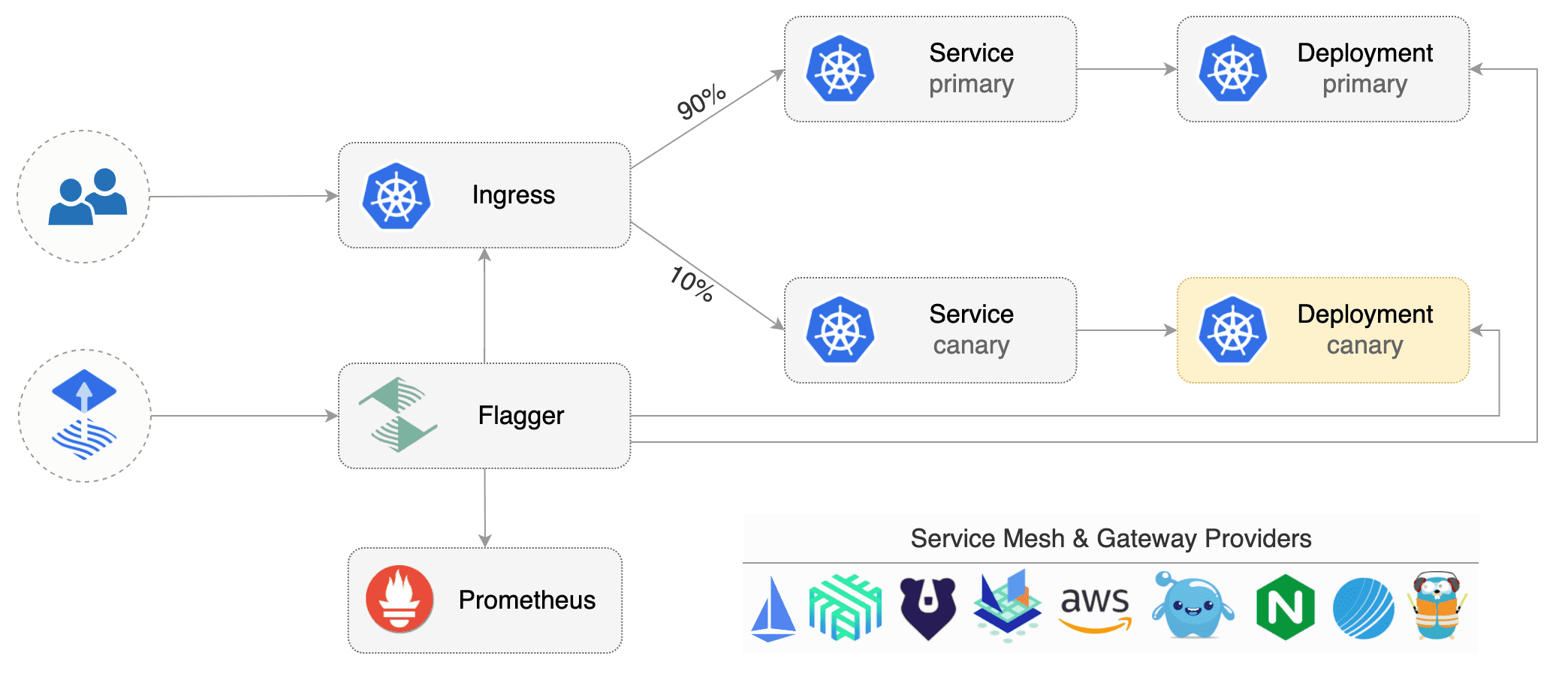You are viewing documentation for Flux version: 2.2
Version 2.2 of the documentation is no longer actively maintained. The site that you are currently viewing is an archived snapshot. For up-to-date documentation, see the latest version.
Flagger
Flagger is a progressive delivery tool that automates the release process for applications running on Kubernetes. It reduces the risk of introducing a new software version in production by gradually shifting traffic to the new version while measuring metrics and running conformance tests.
Flagger implements several deployment strategies (Canary releases, A/B testing, Blue/Green mirroring) using a service mesh (App Mesh, Istio, Linkerd, Kuma, Open Service Mesh) or an ingress controller (Contour, Gloo, NGINX, Skipper, Traefik, APISIX) for traffic routing. For release analysis, Flagger can query Prometheus, InfluxDB, Datadog, New Relic, CloudWatch, Stackdriver or Graphite and for alerting it uses Slack, MS Teams, Discord and Rocket.

Flagger can be configured with Kubernetes custom resources and is compatible with any CI/CD solutions made for Kubernetes. Since Flagger is declarative and reacts to Kubernetes events, it can be used in GitOps pipelines together with tools like Flux, JenkinsX, Carvel, Argo, etc.
Getting started
To get started with Flagger, choose one of the supported routing providers and install Flagger with Flux.
After installing Flagger, you can follow one of these tutorials to get started:
Service mesh tutorials
Ingress controller tutorials
Hands-on GitOps workshops
CNCF
Flagger is a Cloud Native Computing Foundation project and part of Flux family of GitOps tools.
The Linux Foundation® (TLF) has registered trademarks and uses trademarks. For a list of TLF trademarks, see Trademark Usage.